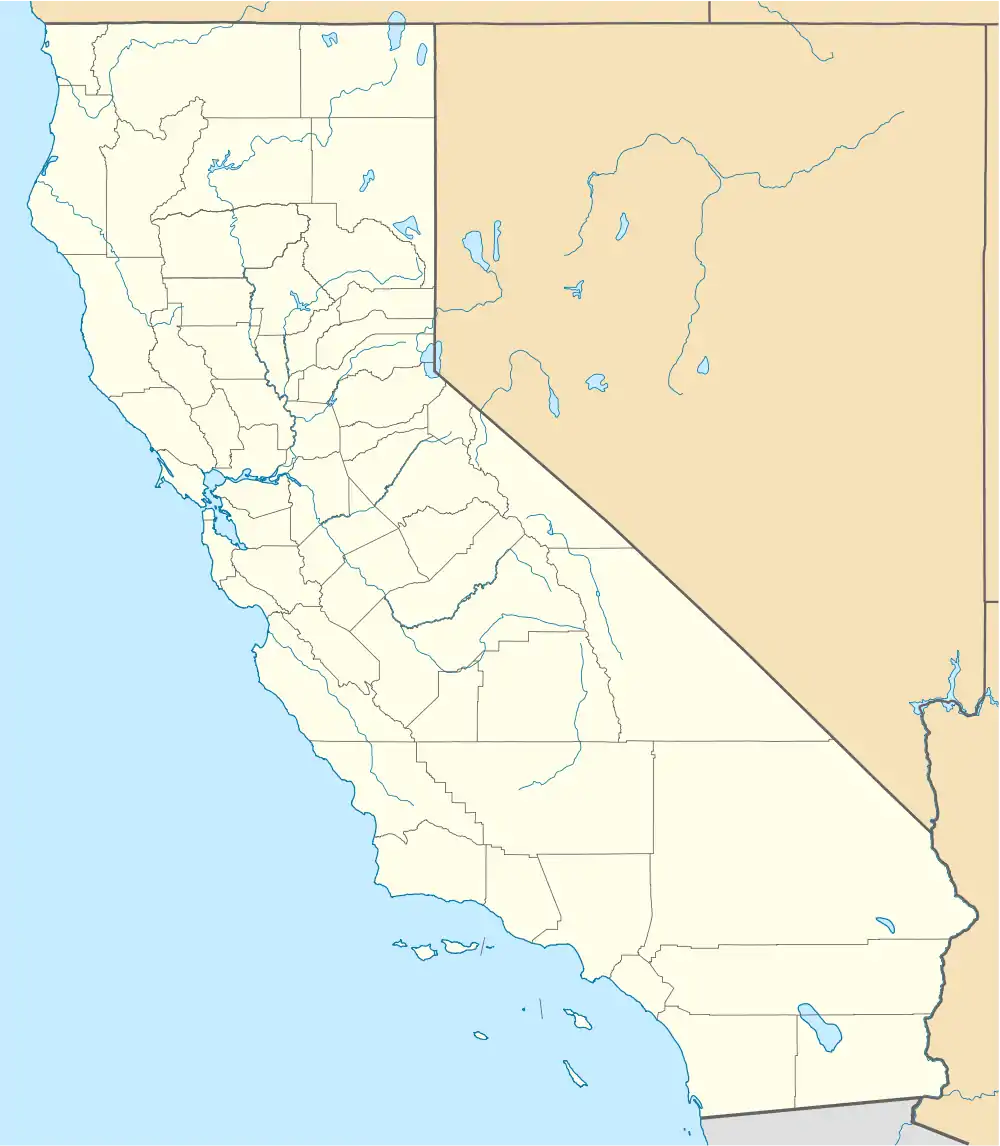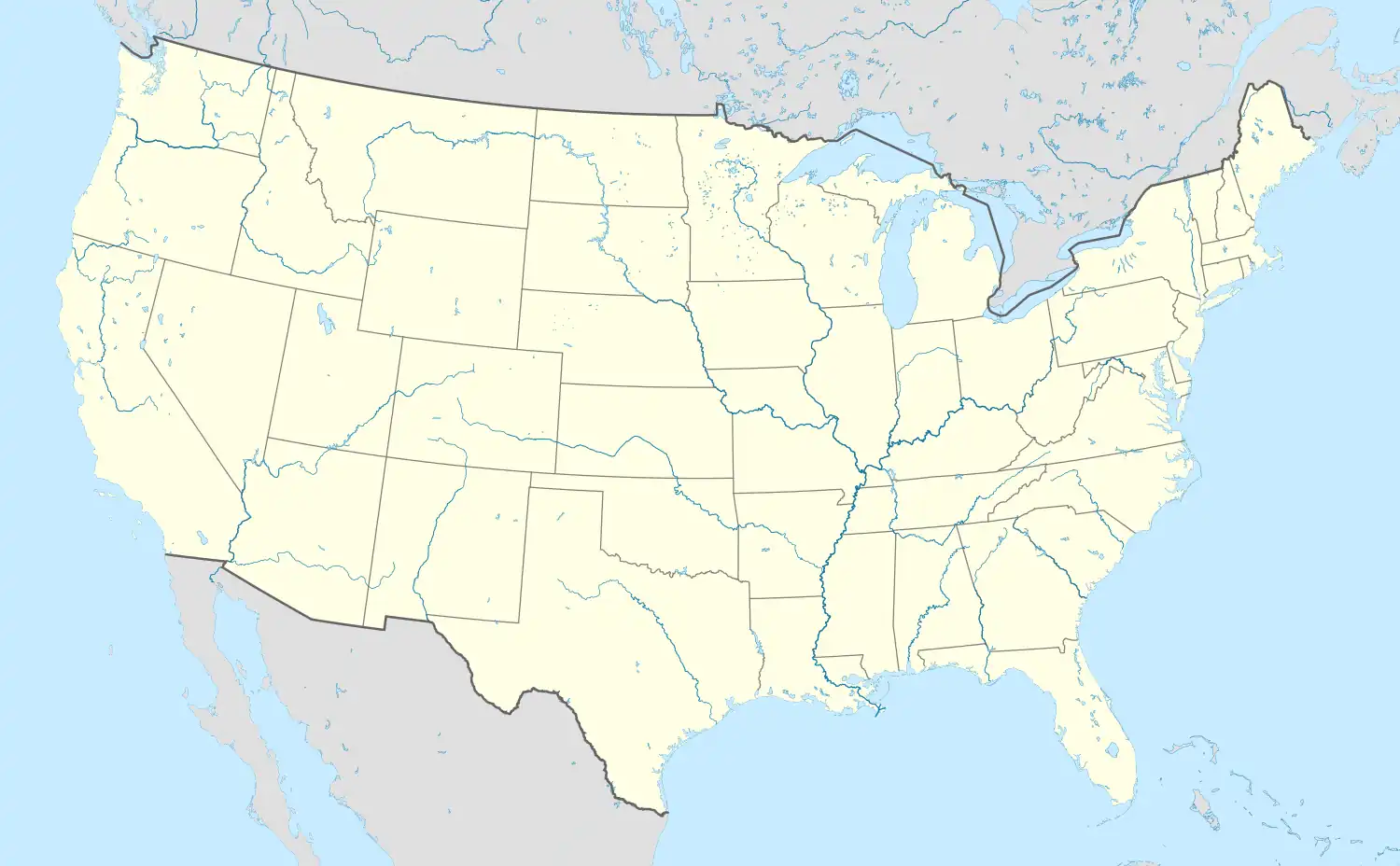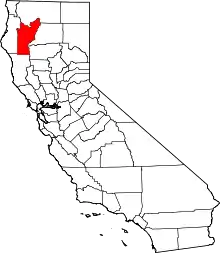Peanut, California | |
|---|---|
 Peanut, California  Peanut, California | |
| Coordinates: 40°28′05″N 123°10′07″W / 40.46806°N 123.16861°W | |
| Country | United States |
| State | California |
| County | Trinity |
| Elevation | 2,579 ft (786 m) |
| Time zone | UTC-8 (Pacific (PST)) |
| • Summer (DST) | UTC-7 (PDT) |
| Area code | 530 |
| GNIS feature ID | 264592[1] |
Peanut is an unincorporated area in Trinity County, California, previously called Salt Creek.[2][3] It is located on Highway 3, south of Hayfork and north of Highway 36 at an elevation of 2,499 feet (762 m).
As many as 100 people once lived there.[4] In 2018, KQED reported that there were "just a few old horse barns and a few dozen residents nearby".[3]
History
Prior to the arrival of settlers, the place that became known as Peanut was inhabited by the Wintu tribe.[5]
In the late 19th century, the area was referred to as Salt Creek.[2][4] It was a stopping point on the trail from nearby Weaverville to the California coast, offering fresh water and a natural spring.[3] With its cool, mountainous climate, the area is inhospitable to growing peanuts.[6]
Origins of name
In 1898, settlers in Salt Creek, which had a general store called Cuff's, decided to apply for a post office.[7] At the time, the nearest post office was in Hayfork, a seven-mile journey by horse.[2] The name "Salt Creek" was deemed unsuitable because of a United States Board on Geographic Names rule which required single-word town names.[5]
According to California Place Names, the petitioners originally considered naming the town after Mrs. Cuff.[7] When they discussed their application with the postmaster at Weaverville, A. L. Paulsen, he suggested the name "Peanut" instead because it was unique; no other post office in the directory had its name.[4][7] The postmaster's own fondness of peanuts is also often cited as the reason for his choice.[4][7][8] According to the memoir of Salt Creek schoolteacher Joe McKnight, Paulsen was eating peanuts when he suggested the name.[2]
The petitioners added Peanut to their application as one of their choices.[7] The United States Post Office Department approved the name Peanut on January 20, 1900.[7]
Local economy
Although the town was too small to have its own saloon, during Prohibition, bootleggers from Peanut became well known locally for supplying high-quality liquor.[4]
Peanut once had a sawmill which burned down in the 1940s,[4] or mid-1950s.[6]
In 1970, the owner of land where the town of Peanut once stood, Woody Smith of San Jose, put his 12-acre parcel up for sale.[4]
Popularity
Peanut became popular with tourists during the presidency of Jimmy Carter, a former peanut farmer.[6] In 1979, a local resident told the Sacramento Bee that tourists came looking for the Peanut post office, because they wanted to "mail a post card with the Peanut postmark."[6] They also said that road maps of the area often included Peanut purely due to the novelty of its name.[6]
People
- Marjorie Schmidt, author of Growing California Native Plants (1982)[9]
References
- ↑ "Peanut". Geographic Names Information System. United States Geological Survey, United States Department of the Interior.
- 1 2 3 4 Branson-Potts, Hailey (September 10, 2020). "The nutty story of a town called Peanut". The Los Angeles Times. p. A1. Retrieved November 12, 2023 – via Newspapers.com.
- 1 2 3 Khokha, Sasha (March 23, 2018). "Peanut: How a Postmaster's Snack Changed a California Town's Name". KQED. Retrieved November 12, 2023.
- 1 2 3 4 5 6 7 Sanders, Garth (October 21, 1970). "Poor old town of Peanut is dead". Record Searchlight. Redding, California. Retrieved November 12, 2023 – via Newspapers.com.
- 1 2 Branson-Potts, Hailey (September 10, 2020). "A post office and a little town called Peanut (Continued from A1)". The Los Angeles Times. p. A9. Retrieved November 12, 2023 – via Newspapers.com.
- 1 2 3 4 5 Wiley, Walt (November 2, 1979). "Where's Peanut? Trinity Town Does Nicely, Thank You". The Sacramento Bee. pp. B1, B3. Retrieved November 12, 2023 – via Newspapers.com.
- 1 2 3 4 5 6 Gudde, Erwin Gustav (1998). Bright, William (ed.). California Place Names (4th edition, revised and enlarged ed.). University of California Press. p. 284. ISBN 0-520-21316-5.
- ↑ Trask, Larry; Trask, Robert Lawrence (January 2010). Why Do Languages Change?. Cambridge University Press. p. 77. ISBN 978-0-521-83802-3.
- ↑ Additions to the national wilderness preservation system: hearings before the Subcommittee on Public Lands and National Parks of the Committee on Interior and Insular Affairs, House of Representatives, Ninety-seventh Congress, first session. U.S. Government Printing Office. 1982. p. 52 – via Google Books.
